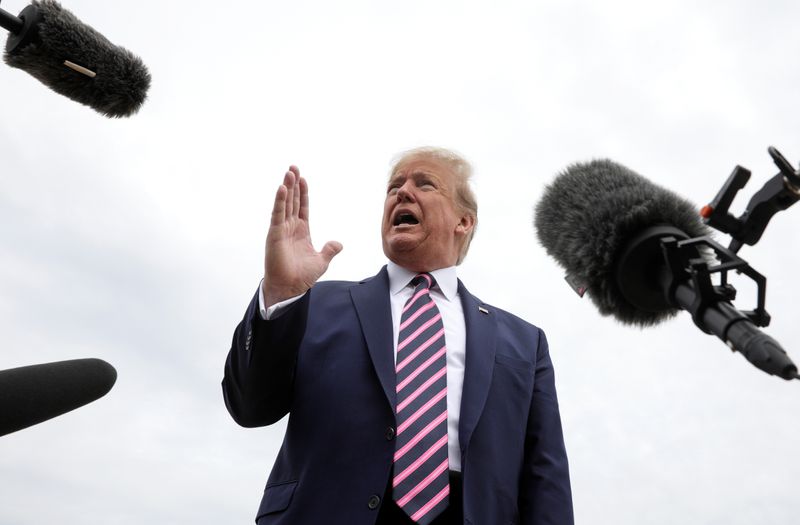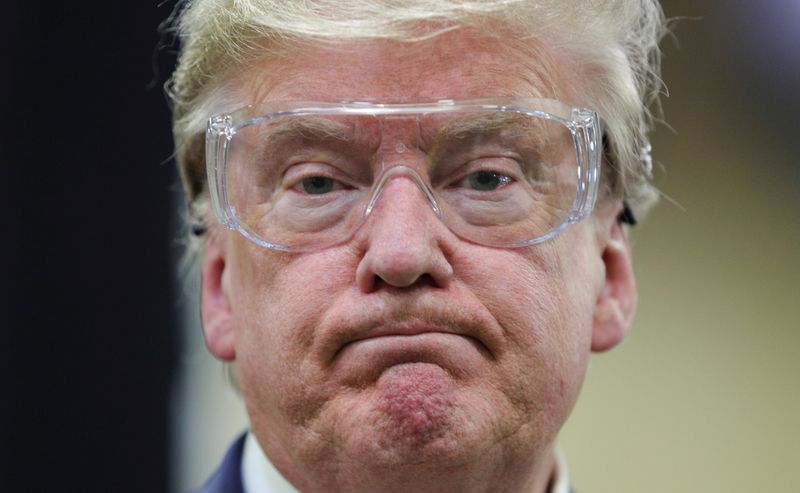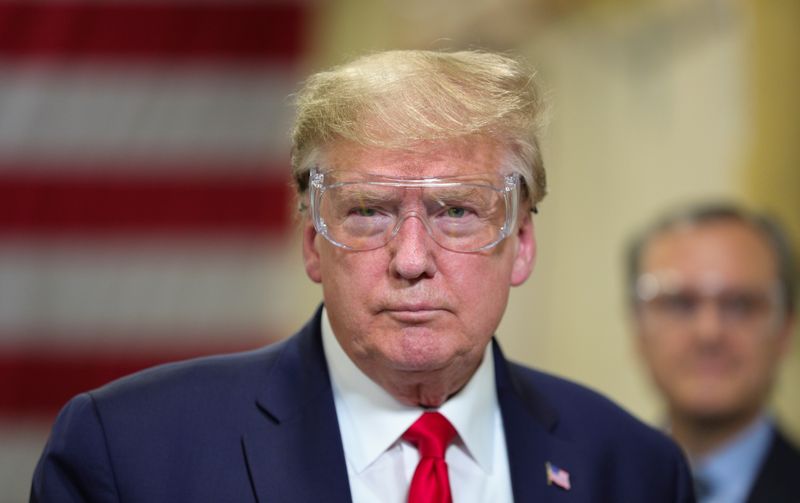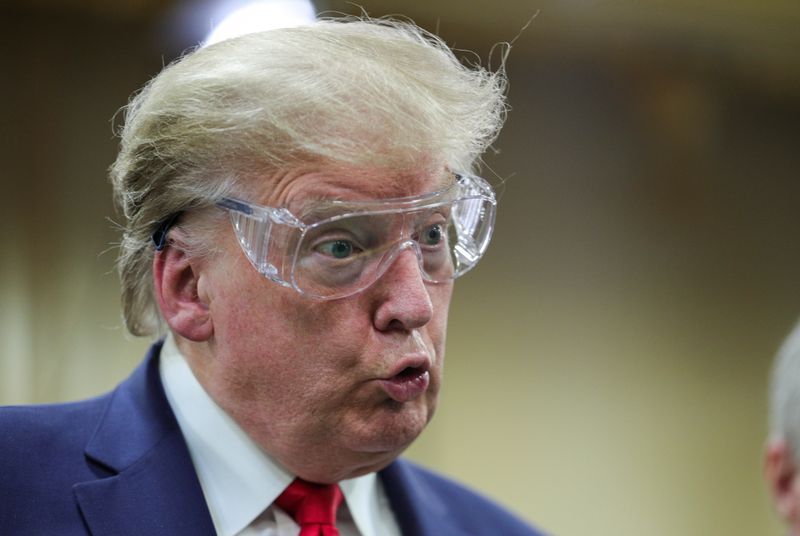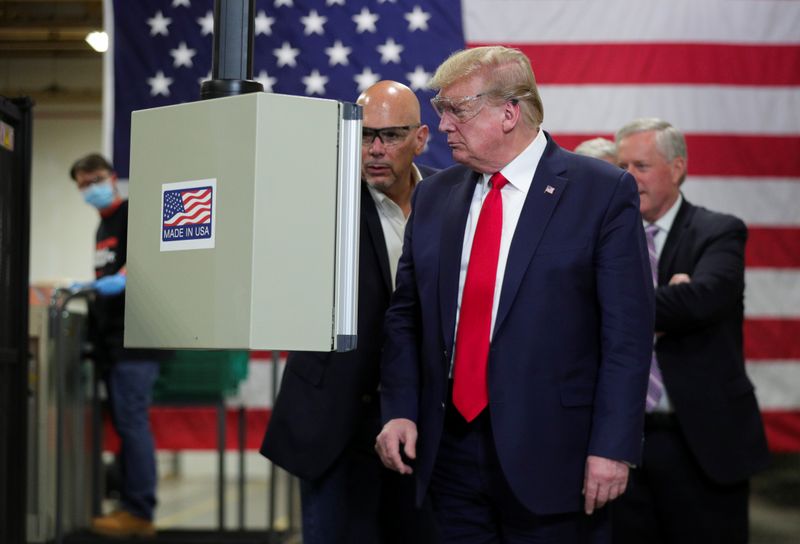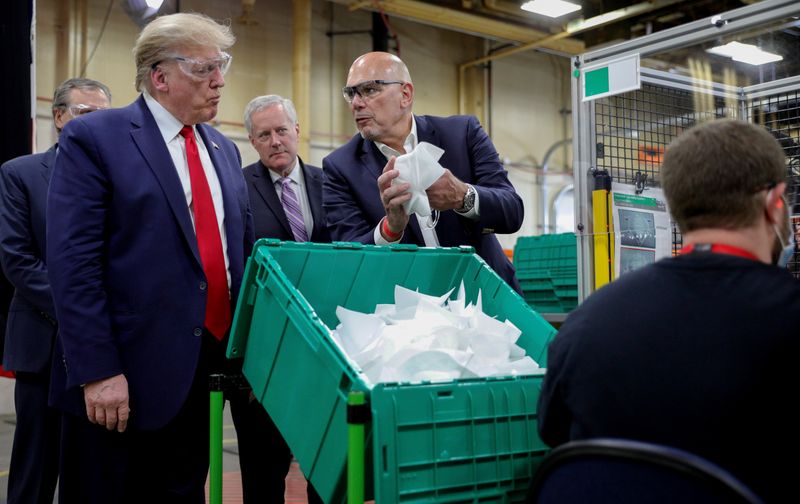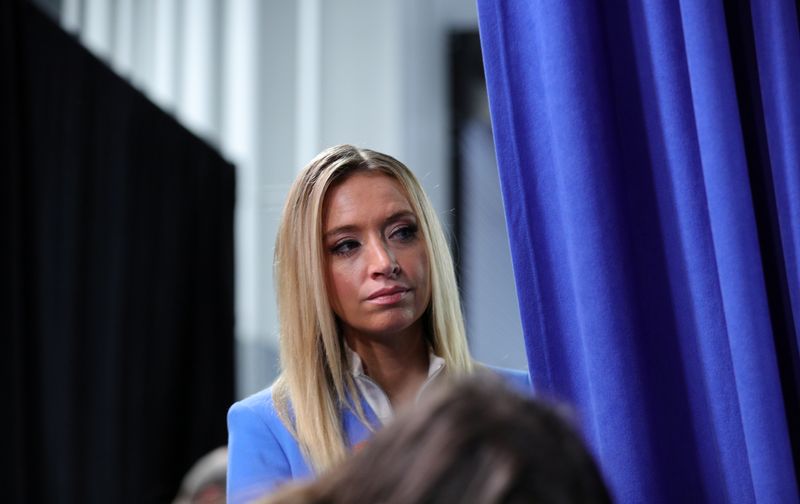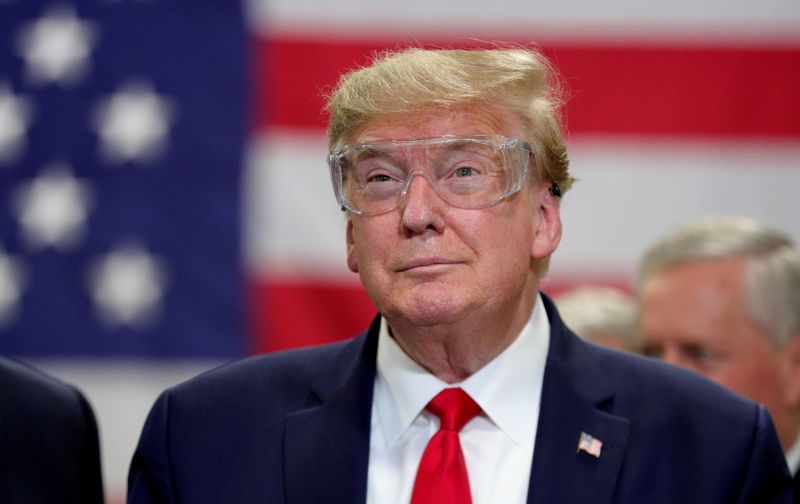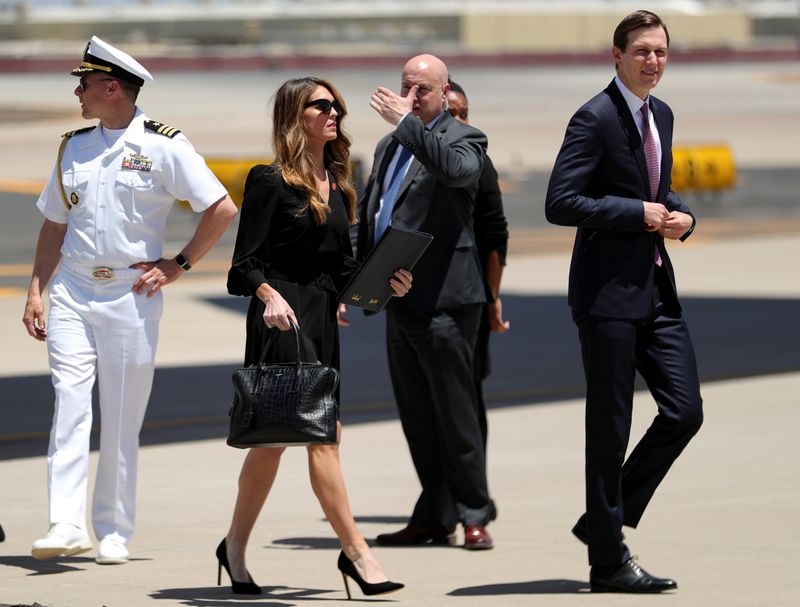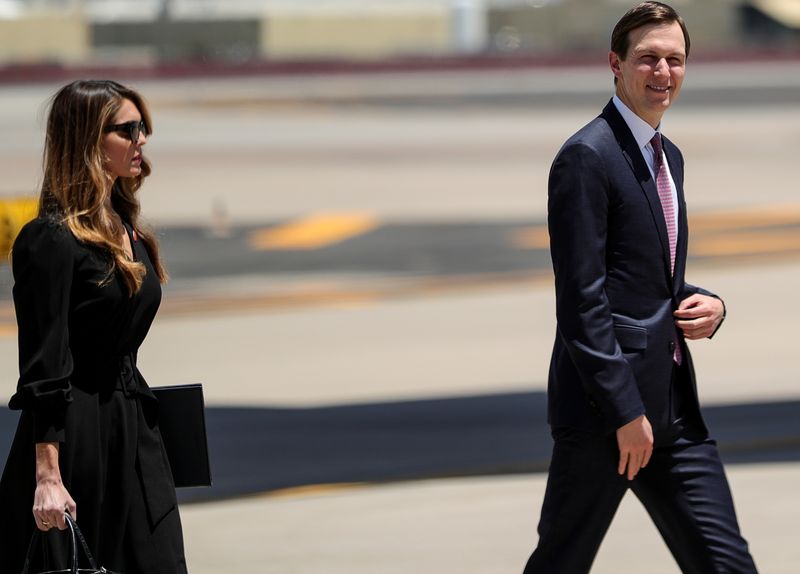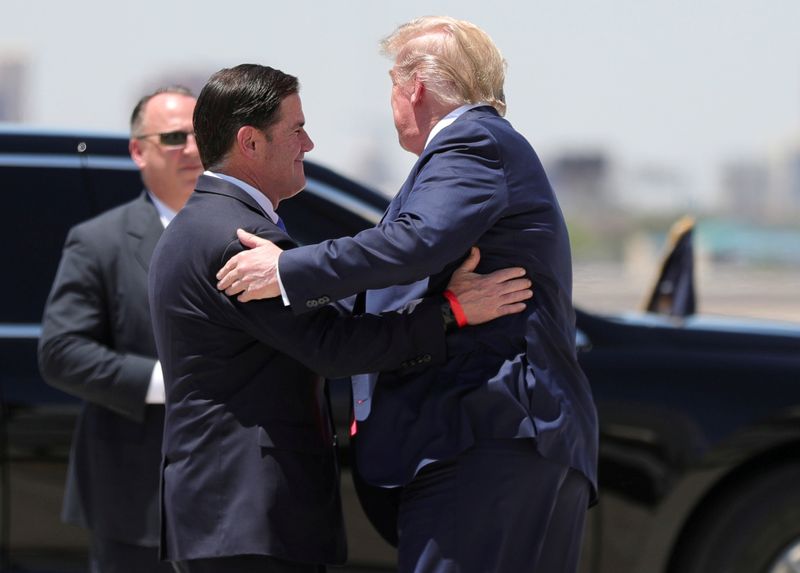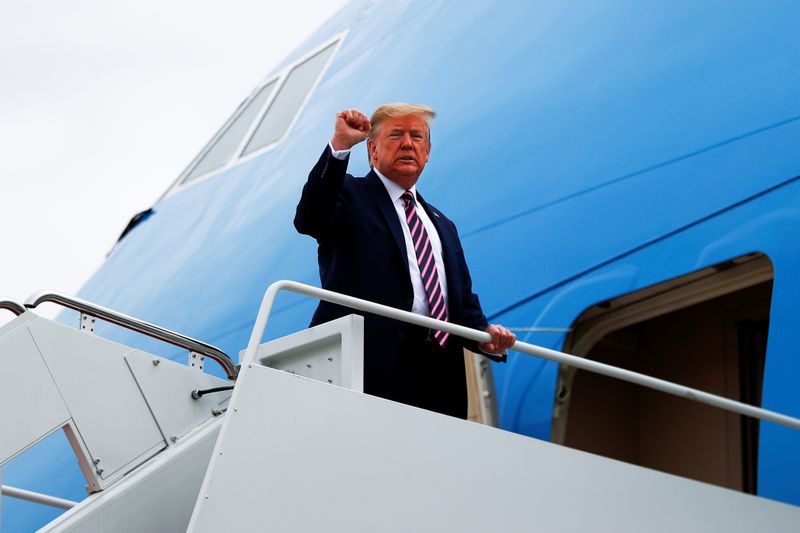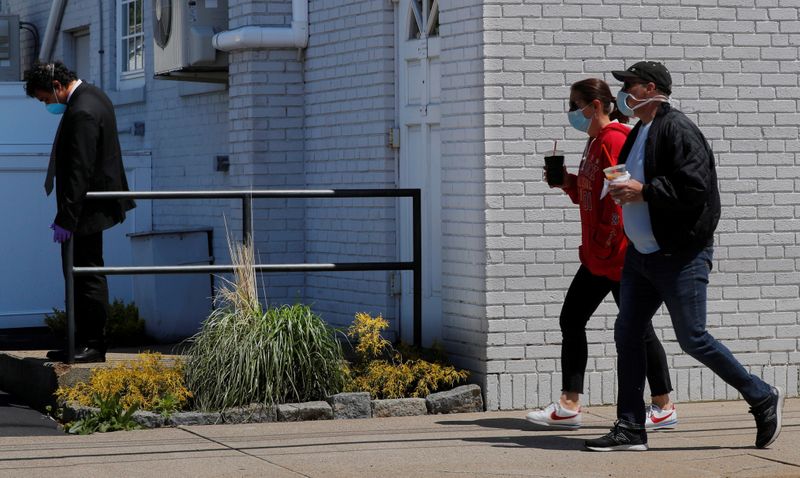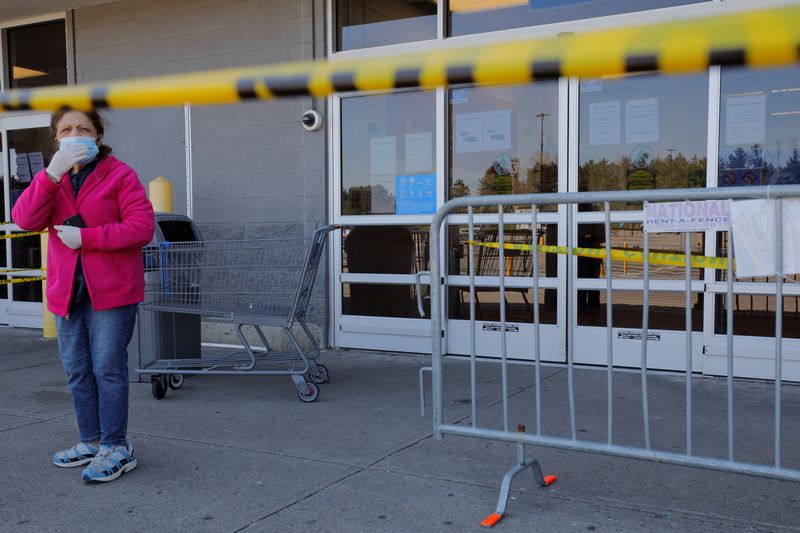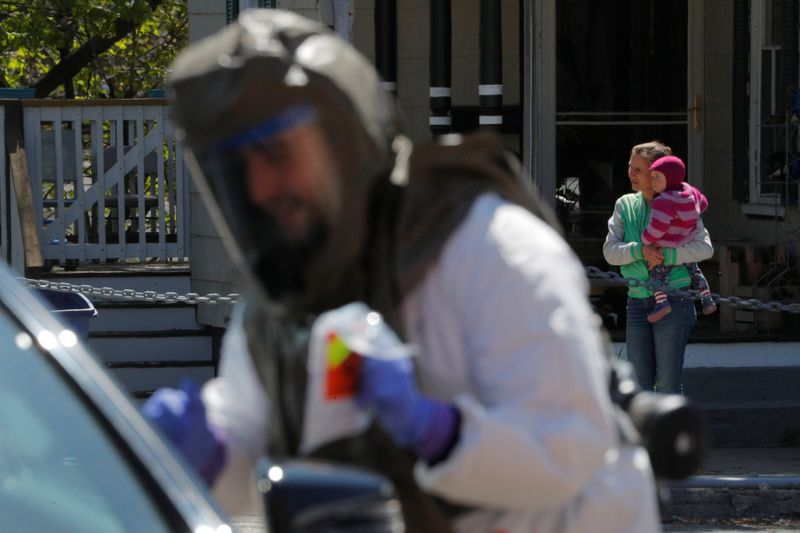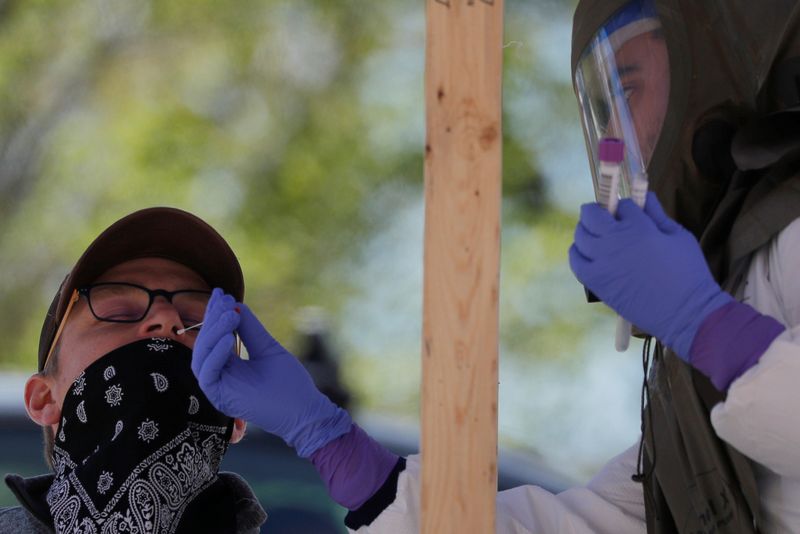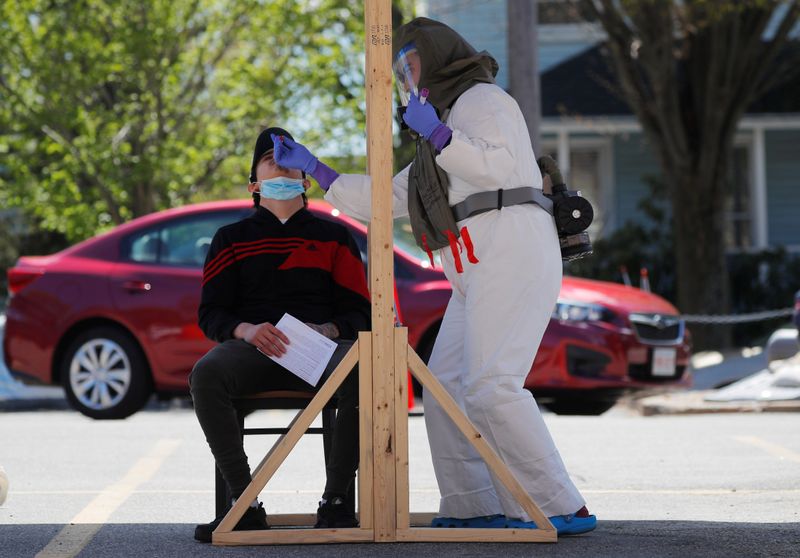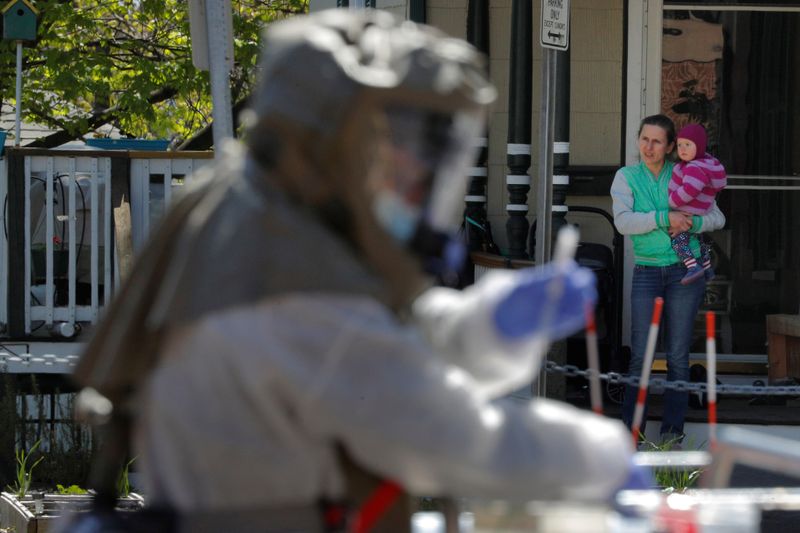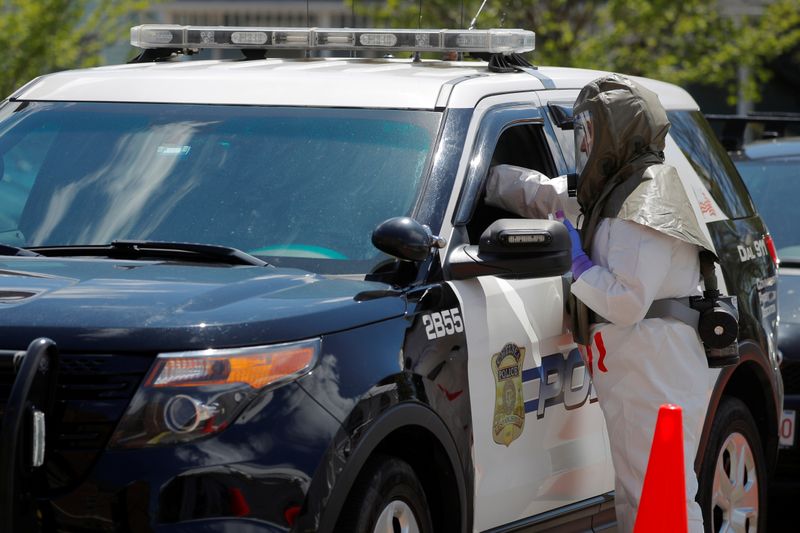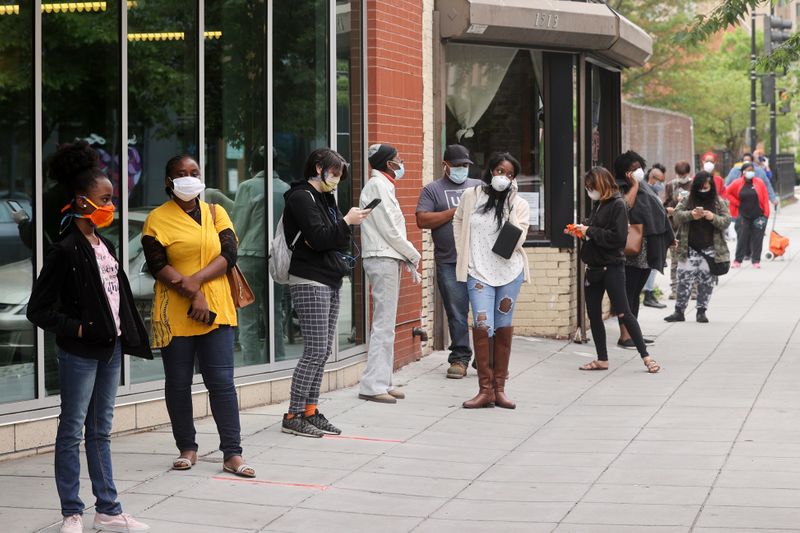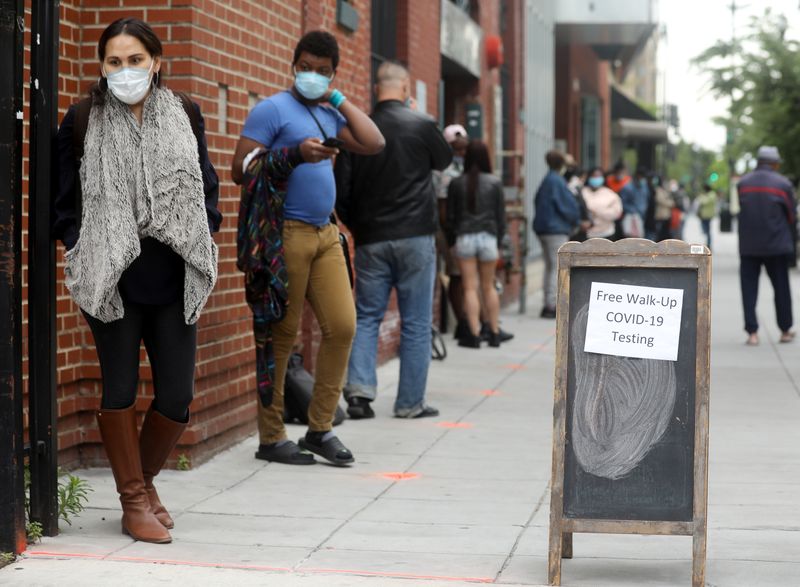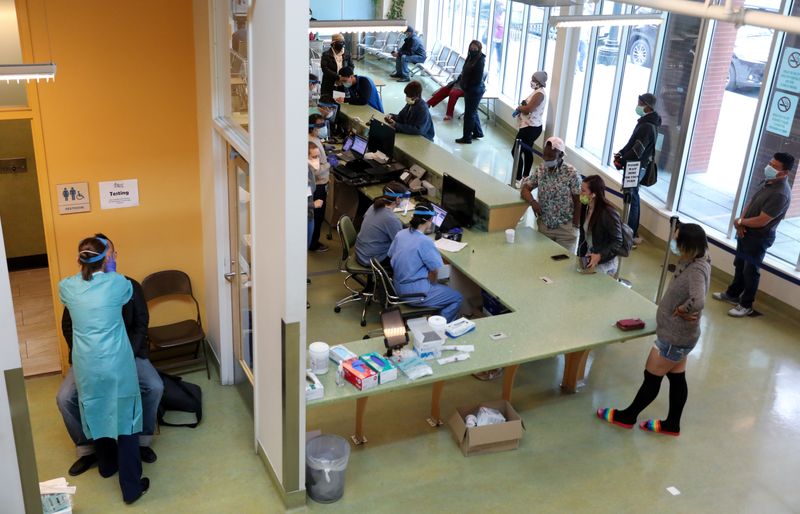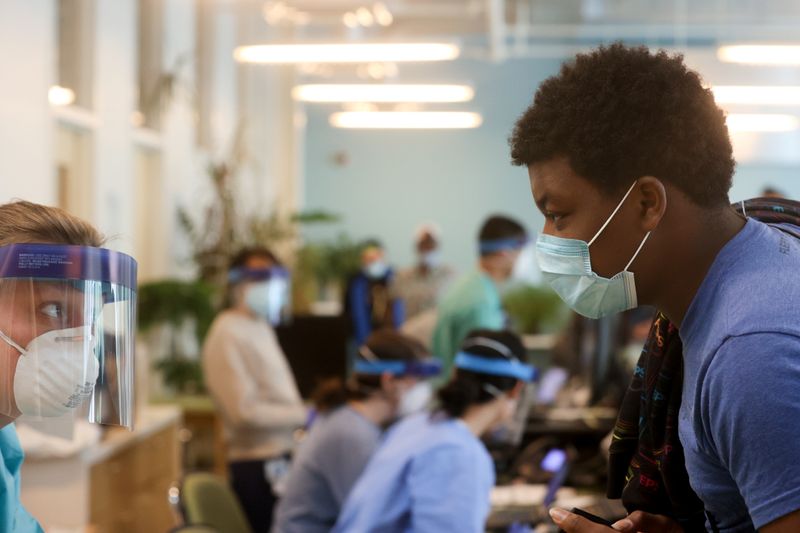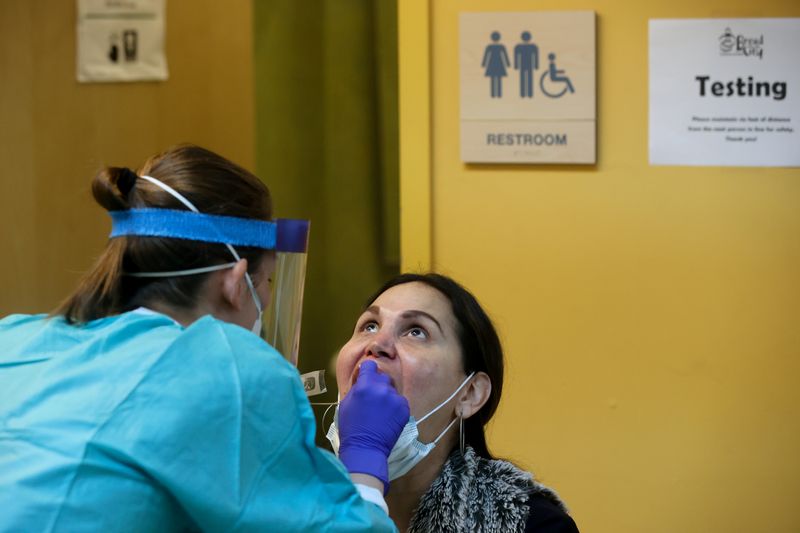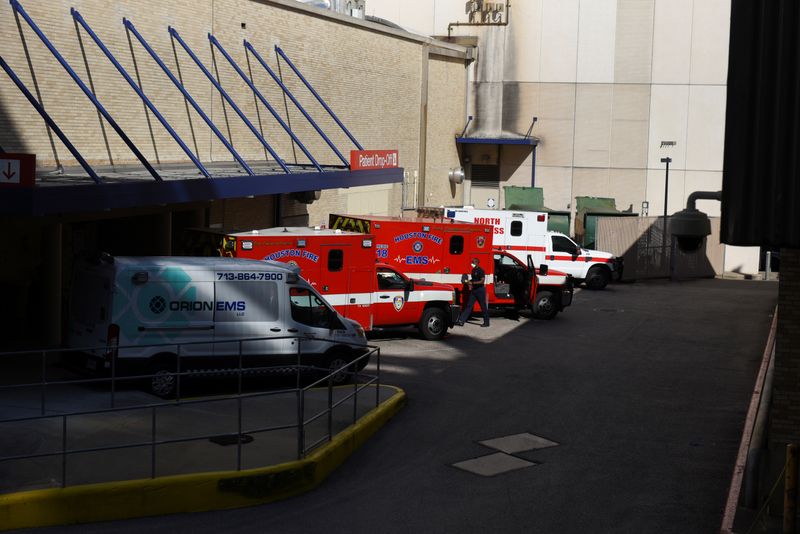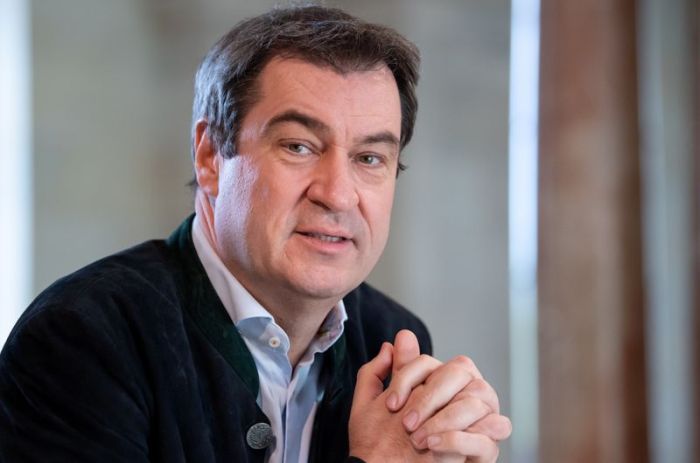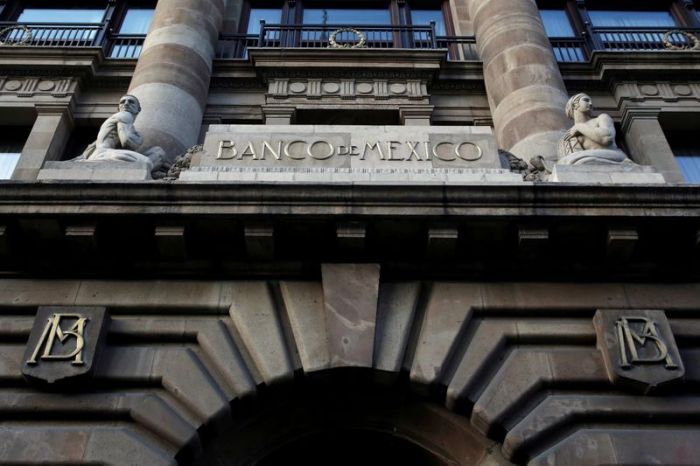PHOENIX (Reuters) – President Donald Trump on Tuesday accused Democrats of hoping his coronavirus response fails “so they can win the election,” as the Republican governor of Texas moved to further relax business shutdowns aimed at quelling the pandemic.
Trump’s latest partisan commentary on the public health crisis and resulting economic meltdown engulfing his presidency came hours before he visited a face-mask factory in Arizona, where he defied infection-control guidelines by not wearing a mask himself.
At the plant, Trump said he planned to wind down the White House coronavirus task force led by Vice President Mike Pence as the country shifts into a new phase focusing on the aftermath of the outbreak.
“We can’t keep our country closed for the next five years,” Trump said, when asked why it was time to wind down the task force.
He said two leading medical experts who have played prominent roles on the task force – Dr. Anthony Fauci and Dr. Deborah Birx – would stay on as advisers after the group was dismantled.
Fauci, the National Institute of Allergy and Infectious Disease director who has at times openly contradicted Trump’s assertions about the pandemic, has become a lightning rod of scorn from the president’s supporters on the far right.
Before departing the White House, Trump was asked by a reporter why he would allow Fauci to testify next week before a committee of the Republican-controlled U.S. Senate but not the Democratic-majority House of Representatives.
“Because the House is a setup. The House is a bunch of Trump haters,” the Republican president answered. “They, frankly, want our situation to be unsuccessful, which means death, which means death, and our situation is going to be very successful.”
Trump, who had staked his November re-election bid on a robust U.S. economy before the pandemic struck, said Democrats “want us to fail so they can win an election, which they’re not going to win.” He offered no evidence to support his assertions.
Despite Trump’s efforts to steer Fauci away from what the president sees as hostile territory on Capitol Hill, a House panel will likely be the next battleground in a separate controversy over the recent ouster of the physician who led a U.S. biomedical agency.
Dr. Rick Bright filed a whistleblower complaint on Tuesday accusing the Trump administration of removing him in retaliation for concerns he tried to raise about the coronavirus threat in January. A spokeswoman for Bright said he would testify before a House panel on May 14.
GRAPHIC: World-focused tracker with country-by-country interactive – https://graphics.reuters.com/HEALTH-CORONAVIRUS/COUNTRIES/oakveqlyvrd/index.html?id=united-kingdom
PANDEMIC RESPONSE POLITICIZED
Debate over how and when to ease restrictions on commerce and social life have grown increasingly politicized, with Trump and his supporters agitating to loosen social-distancing measures more swiftly than medical experts deem prudent.
Democratic governors of states hardest hit by the outbreak have taken a more cautious stance, abiding by public health officials – and guidelines from the White House itself – warning that vastly expanded coronavirus testing and other safeguards be put in place first.
But dozens of U.S. states, many led by Republicans in the South, Midwest and mountain West, have begun in recent weeks ease stay-at-home orders that have paralyzed their economies.
Texas, one of the largest, allowed restaurants, retail stores and shopping malls to resume business on a limited basis last Friday. On Tuesday Governor Greg Abbott, a Republican, announced he was expanding that partial reopening to hair salons, barber shops and nail parlors this Friday, to be followed by fitness clubs and office buildings on May 18, subject to occupancy restrictions and workplace social-distancing.
He also recommended individuals 65 and over, as well as people with chronic health conditions, largely remain at home.
Widespread relaxation of social-distancing measures was a key factor cited by an influential coronavirus mortality model on Monday in predicting nearly 135,000 Americans would die from COVID-19 by early August, almost double previous projections.
The research model from the University of Washington’s Institute for Health Metrics and Evaluation has become a closely watched data point often cited by the White House and public health authorities in gauging the coronavirus crisis.
The highly contagious virus, which emerged in China late last year before spreading around the globe, already is known to have infected more than 1.2 million people in the United States. At least 70,000 Americans have died from COVID-19, according to a Reuters tally.
In Arizona, marking his first trip in weeks beyond the greater Washington area, Trump visited a Honeywell International Inc <HON.N> aerospace facility in Phoenix that is making protective N95 face masks for healthcare workers.
But the president, who has consistently declined to wear a mask in public despite White House guidelines urging people to do so, showed up at the facility without any face covering. Most of the workers were wearing masks.
Arizona, a battleground state that could decide the election outcome, has also joined the ranks of partial economic reopenings, after protesters rallied in the capital Phoenix demanding Republican Governor Doug Ducey loosen restrictions.
GRAPHIC: Tracking the novel coronavirus in the U.S. – https://graphics.reuters.com/HEALTH-CORONAVIRUS-USA/0100B5K8423/index.html
(Reporting by Susan Heavey, Jeff Mason and Steve Holland in Washington, Nathan Layne in Connecticut, Brendan O’Brien in Chicago, Brad Brooks in Austin, Texas, Rich McKay in Atlanta and Rajesh Kumar Singh; writing by Grant McCool and Steve Gorman; editing by Frank McGurty, Howard Goller, Cynthia Osterman and Gerry Doyle)

